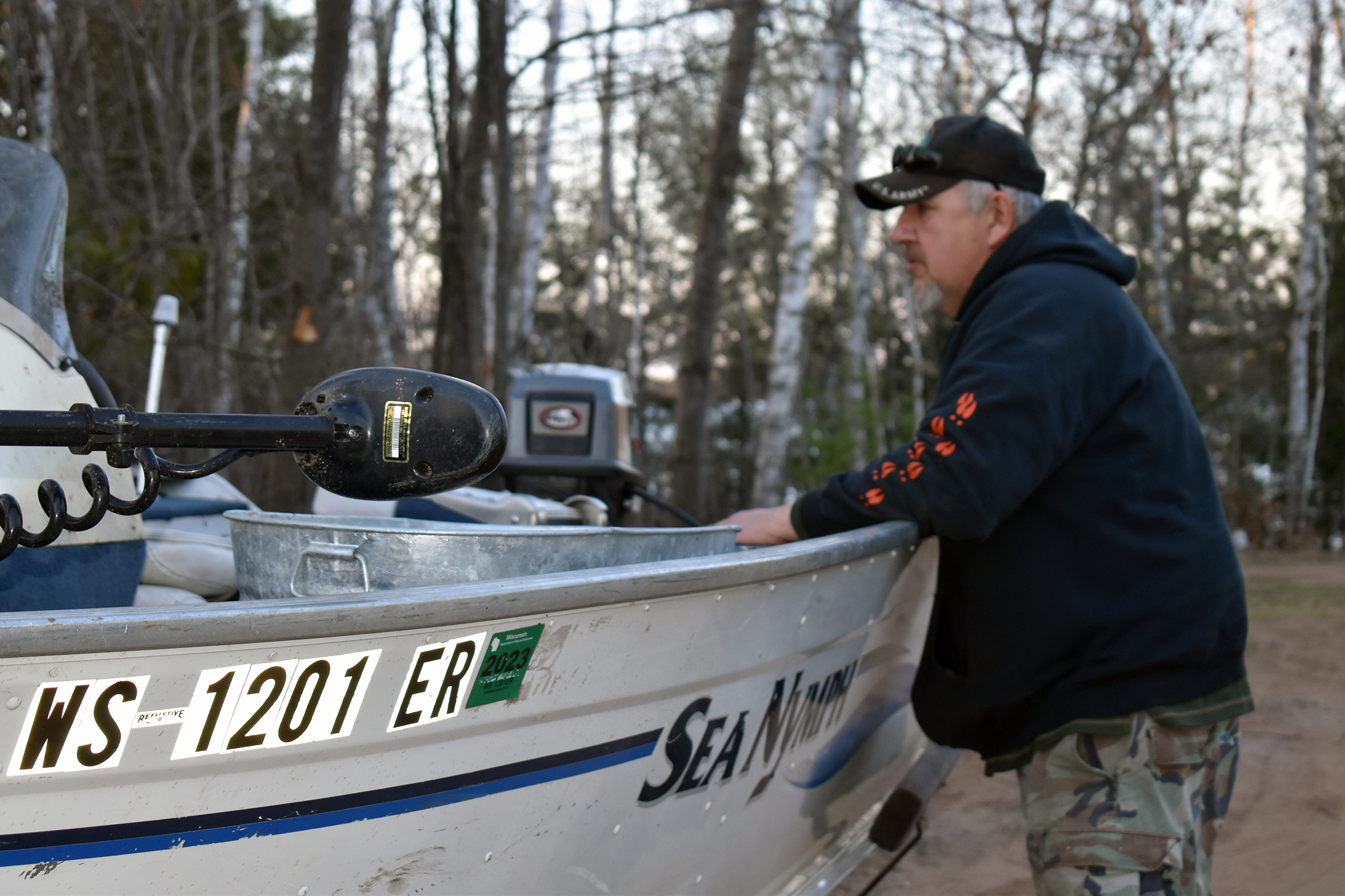Lake Superior and the Apostle Islands dwell below a Bayfield hilltop orchard where, for a short time this summer, mature apple trees were accompanied by 100 potted poplars. The young poplars glowed bright green as they waited to be purchased.
Patrons, scientists and staff at Hauser’s Superior View Farm prophesied the poplars’ future like new parents wondering how their children might one day change the world. Within a week, each of the sprightly trees ornamented with paper tags saying “InnovaTree” had been sold.
“We’re really excited about the potential uses of this tree,” said Jeff Jackson, an educator for the Natural Resources Research Institute at the University of Minnesota Duluth. “They’re sold out for 2023. Next year Hauser’s will be selling about 500 InnovaTrees. I think other nurseries will begin offering it for sale, too.”
News with a little more humanity
WPR’s “Wisconsin Today” newsletter keeps you connected to the state you love without feeling overwhelmed. No paywall. No agenda. No corporate filter.
The InnovaTree is a new hybrid developed following decades of breeding research by the Duluth-based institute. When its research began in the 1990s, there was a shortage of tree pulp needed to make paper. But as the need for pulp eased over time, the research shifted to reducing pollution.
The InnovaTree ultimately proved to be excellent at pollution cleanup, disease resistance and fast growth, Jackson said. This year, the institute partnered with Hauser’s Superior View Farm in Bayfield and officially brought the InnovaTree to market.
“This tree was designed for the climate we have in Minnesota and Wisconsin,” Jackson said. “It was built for the upper Midwest.”
Jackson recently appeared on Wisconsin Public Radio’s “The Morning Show” to discuss the InnovaTree’s development and potential uses.
This interview has been edited for clarity and brevity.
Kate Archer Kent: The InnovaTree is a cross between two poplar species: the eastern cottonwood and black poplar. Why did scientists only use the poplar genus to develop the InnovaTree?
Jeff Jackson: Poplar trees are naturally one of the fastest growing trees in our climate zone. The black poplar can grow easily on poor quality agricultural land and a lot of other tree species can’t. That means the InnovaTree can be raised for industrial purposes like making pulp, paper and wood products.
KAK: Another poplar, the white poplar, is “restricted” by the Wisconsin Department of Natural Resources because of its potential to become invasive in our region. One of the species used in the InnovaTree is non-native to Wisconsin. Does this increase the likelihood that the InnovaTree could become invasive?
JJ: Definitely not. This is something I take very seriously. Black poplar and eastern cottonwood poplar have been planted in the United States for over 75 years. There is no recorded evidence of them becoming invasive, spreading or depleting the soil of essential chemicals and minerals.
The InnovaTree does not sucker or grow from the roots like our native quaking aspen trees will. The InnovaTree produces pollen because it is a male tree. Only female trees produce those fluffy seeds people see floating in the air during springtime.
KAK: Is the InnovaTree a product of genetic modification?
JJ: No. The InnovaTree is not a GMO. Scientists used traditional selective breeding techniques. It’s the same way that Minnesota apples were developed: without genetic modification.
KAK: What is unique about how the InnovaTree functions within the environment?
JJ: The InnovaTree shows tremendous potential to uptake carbon dioxide from the atmosphere partially because of how fast it grows. It grows between 5 and 8 feet per year, which is 64 percent faster than other hybrid poplars on the market.
It also absorbs a lot of water, making it ideal for a process called “phytoremediation.” That’s a fancy term for “cleaning up pollution from soil and water.” For example, if you plant a wide area of the InnovaTree between a landfill and a river, the trees will intercept and absorb toxins in the water as it flows downhill and into the river.
KAK: What happens to the toxins they absorb?
JJ: It depends on which toxins they’re pulling into their system. Some chemicals will be pulled up by a tree and they’ll be expelled out the leaves into the atmosphere completely unchanged. That process dilutes the toxins and pulls them out of a toxic site. Other chemicals can be metabolized by a tree, broken apart, and rendered harmless. When heavy metals are absorbed by a tree, they’ll remain in the tree.
KAK: How can people utilize the InnovaTree?
JJ: We have a possible collaboration with a startup company that wants to use our trees to pull valuable minerals and metals out of the soil in a process called “phytomining.”
Windbreaks on farms are also a great application for the InnovaTree. We’re working with folks at University of Wisconsin-River Falls to research windbreaks and other agroforestry practices by planting demonstration plots.
The InnovaTree also makes quick shade for homeowners and can be a wonderful privacy screen. We have collaborators with the USDA Forest Service that are using our hybrid poplar trees for brownfield restoration in urban areas as well as urban reforestation.
Wisconsin Public Radio, © Copyright 2025, Board of Regents of the University of Wisconsin System and Wisconsin Educational Communications Board.



